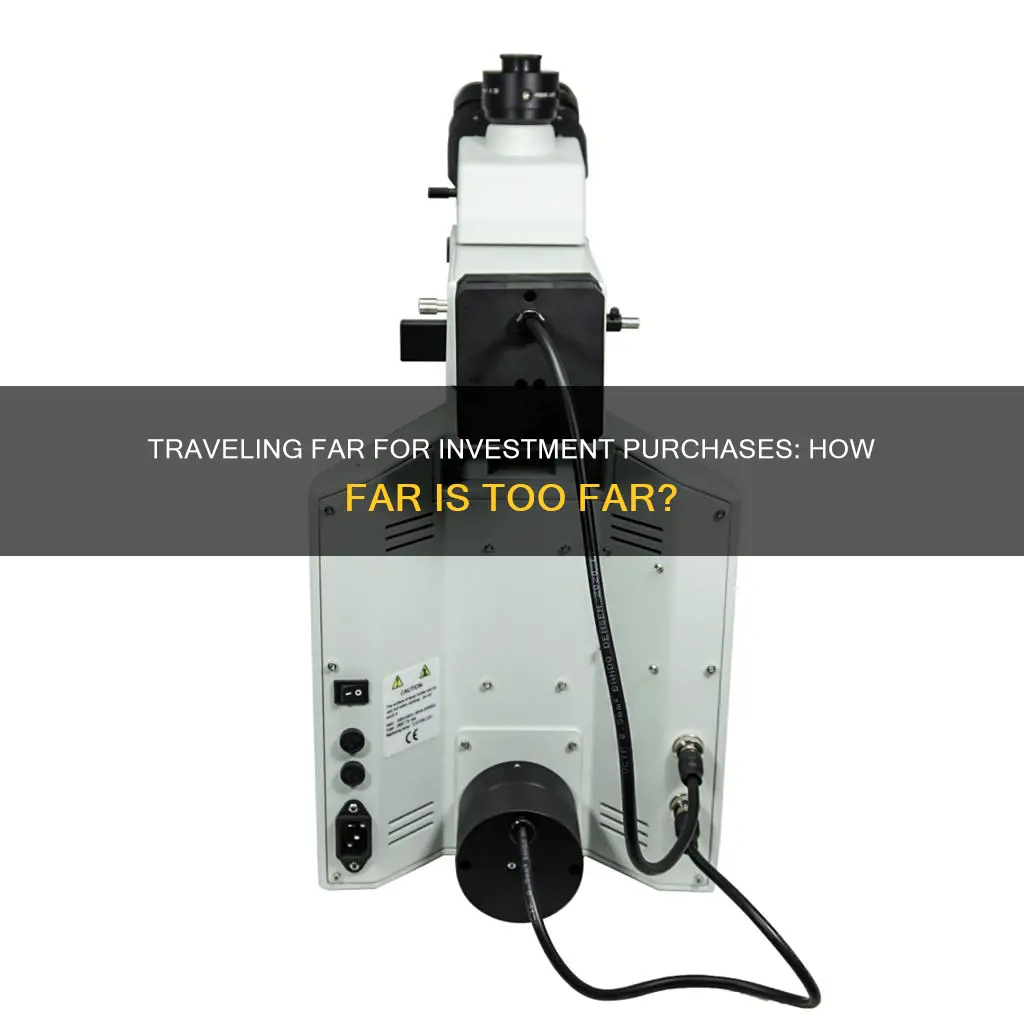
Consumers are willing to travel a certain distance to make everyday purchases, but how far is too far? This is a critical question for businesses aiming to attract customers and ensure their success. Understanding consumer behaviour and the factors influencing their choices is essential for retailers. While conventional wisdom suggests that 80% of consumer spending occurs within 20 miles of home, recent research challenges this notion. Surveys conducted by Access Development reveal that consumers are generally unwilling to travel more than 20 minutes for their everyday purchases, with 93.2% of respondents confirming this trend. This translates to a distance of approximately 3.8 miles, on average, for grocery shoppers. Urban consumers tend to travel less, with 92% travelling 15 minutes or less, while rural consumers often have no choice but to travel longer distances. When proximity is not a factor, consumers prioritise price and quality as the most important factors influencing their purchase decisions. Businesses must consider these insights when strategising to attract customers and compete in a crowded market.
| Characteristics | Values |
|---|---|
| Percentage of consumers who travel 20 minutes or less for everyday purchases | 93.2% |
| Percentage of consumers who travel 15 minutes or less for everyday purchases | 87% |
| Average time travelled to buy gas | 6 minutes |
| Average time travelled to buy clothing | 19 minutes |
| Average time travelled to buy groceries | 8 minutes |
| Average distance travelled to eat at a sit-down restaurant | 1.4 miles |
| Average distance of a consumer's preferred grocery store from their home | 3.8 miles |
| Average distance of a consumer's closest grocery store from their home | 2.2 miles |
What You'll Learn
- Consumers are willing to travel further for unique experiences (restaurants, auto body shops)
- Rural consumers travel further than urban consumers (70% travel 20 mins or more)
- Consumers are distance-sensitive when it comes to everyday purchases (fuel, haircuts, groceries)
- Consumers travel less for frequent purchases (6 mins for gas, 8 mins for groceries)
- Proximity is a major influence on purchasing decisions

Consumers are willing to travel further for unique experiences (restaurants, auto body shops)
Consumers are willing to travel further for unique experiences. This is true for restaurants, auto body shops, and other businesses. While most consumers generally won't travel longer than 20 minutes (or 15 minutes, according to some sources) for everyday purchases, they can be incentivised to travel further for unique experiences.
For example, Fäviken, a destination restaurant in Sweden, was located deep in the wilderness, yet it was heavely booked at all times. It offered an experience that nobody else in the area could or was willing to offer. Similarly, an auto body shop can become a destination business by offering services around specific car brands that no one else in the area provides.
During the COVID-19 pandemic, consumer travel was significantly affected. Many people opted to shop online or use curbside pickup. In 2021, the median distance travelled to arts venues was 49% lower than in 2019, and the median distance travelled to outdoor venues and recreation was 42% lower. However, consumers still sought out unique experiences, and businesses that provided these were able to attract customers.
In today's competitive markets, it is essential to offer something unique to stand out. This could be a quirky activity, an unusual menu item, or a novelty food challenge. However, it is important to note that none of this matters if people don't know about the business. Advertising is crucial to attracting customers, and businesses should consider strategies such as billboard advertising and grocery store advertising to reach their target audience.
Unlocking Home Equity: Strategies for Smart Investing
You may want to see also

Rural consumers travel further than urban consumers (70% travel 20 mins or more)
Consumers are generally willing to travel further for their less frequent, more niche purchases. For example, people are willing to travel 6 minutes on average to buy gas, but 20 minutes on average to buy clothing or shoes. However, this doesn't mean that consumers are not willing to travel further for everyday purchases. In fact, rural consumers routinely travel further than their urban counterparts for everyday purchases.
Rural consumers face challenges that their urban counterparts do not when it comes to making everyday purchases. Research has shown that 70% of rural consumers travel 20 minutes or more for their everyday purchases, compared to 92% of urban consumers who travel 15 minutes or less. This is likely due to the fact that rural consumers have fewer options nearby and must travel further to find what they need.
Not only do urban consumers spend 18% more than rural households, but they also bring home 32% more in annual income. This means that rural consumers are more likely to be selective about their purchases and may be more price-conscious. Additionally, the more frequently a product needs to be purchased, the less distance consumers are willing to travel.
When it comes to attracting rural consumers, businesses should focus on offering unique goods and services that cater to their specific needs. For example, a car repair shop could offer services for specific car brands that are not easily accessible in rural areas. Alternatively, businesses could focus on providing a unique experience that cannot be found elsewhere, such as specialty menu items or challenges for restaurants.
Overall, while rural consumers may travel further for their everyday purchases, they still value convenience and accessibility. Businesses that can offer a convenient and accessible option for rural consumers, while also providing unique goods and services, will be well-positioned to attract this audience.
Stockholder Investment: Is It Really Equity?
You may want to see also

Consumers are distance-sensitive when it comes to everyday purchases (fuel, haircuts, groceries)
Consumers are indeed distance-sensitive when it comes to everyday purchases such as fuel, haircuts, and groceries. According to a survey by Access Development, 93% of consumers typically travel 20 minutes or less for their everyday purchases, and 87% of consumers won't travel beyond 15 minutes. This contradicts the oft-cited but unverifiable claim that 80% of consumer spending occurs within 20 miles of home.
The survey also revealed that the more frequent the purchase, the less distance consumers are willing to travel. For example, consumers are willing to travel only 6 minutes, on average, to buy gas, whereas they will travel 20 minutes for clothing or shoes. For purchases made at least once per week, the average distance consumers are willing to travel shrinks to 10 minutes.
Urban and rural consumers also demonstrated different travel patterns. The vast majority of urban consumers travel 15 minutes or less for everyday purchases, while 70% of rural consumers travel 20 minutes or more. This may be due in part to the fact that urban households have higher incomes than rural households.
When proximity is excluded as a factor, consumers cite quality and price as the most important factors influencing their purchase decisions. Brand reputation and customer service were also mentioned, but to a much lesser extent.
Building an Investment Portfolio: A Beginner's Guide for India
You may want to see also

Consumers travel less for frequent purchases (6 mins for gas, 8 mins for groceries)
Consumers are less inclined to travel long distances for frequent purchases. According to a survey by Access Development, 93.2% of consumers are unwilling to travel longer than 20 minutes for everyday purchases, with 87% not travelling beyond 15 minutes.
The frequency of a purchase is a key factor in determining how far consumers are willing to travel. For example, consumers are only willing to travel 6 minutes, on average, to buy gas, and 8 minutes for groceries. In contrast, they are willing to travel further for less frequent purchases, such as clothing and shoes (20 minutes), or auto service (14 minutes).
The survey also revealed differences between urban and rural consumers. 92% of urban consumers travel 15 minutes or less for everyday purchases, whereas 70% of rural consumers travel 20 minutes or more. This is likely due to the higher density of retailers in urban areas, as well as higher incomes and spending among urban households.
Therefore, for businesses, understanding the travel patterns of their target customers is crucial. This can help them optimise their location and advertising strategies to attract customers effectively.
Understanding BNY Mellon's Investment Management Fee Structure
You may want to see also

Proximity is a major influence on purchasing decisions
The frequency of a purchase also affects how far consumers are willing to travel, with people travelling shorter distances for frequently bought items. For example, consumers travel an average of 6 minutes to buy gas, whereas they travel 20 minutes to buy clothing or shoes. This is likely because frequently purchased items are often more essential, and consumers are therefore less willing to travel far for them.
Urban consumers tend to travel less than rural consumers, with 97.2% of urban consumers travelling 20 minutes or less for everyday purchases. This is probably due to the higher density of shops in urban areas, meaning that urban consumers do not need to travel as far to find what they are looking for. Urban consumers also have a higher annual income than rural households, meaning they may be more selective about where they shop.
When proximity is not a factor, consumers cite quality and price as the most important factors influencing their purchasing decisions. This suggests that while proximity is important, consumers will travel further if they believe they are getting a better deal or higher-quality product.
Businesses can use this information to their advantage by situating themselves in locations that are convenient for their target customers. They can also use incentives, such as cash back offers, to encourage customers to travel further to their stores. Ultimately, proximity is a key consideration for consumers and businesses alike when it comes to making and influencing purchasing decisions.
Challenges of Due Diligence for Investment Managers
You may want to see also
Frequently asked questions
93.2% of consumers are willing to travel up to 20 minutes for everyday purchases, with 87% of consumers willing to travel no more than 15 minutes.
97.2% of urban consumers travel 20 minutes or less for everyday purchases, while 70.3% of rural consumers travel 20 minutes or more.
The more frequent a purchase, the shorter the distance consumers are willing to travel. For example, consumers travel around 6 minutes to buy gas and 8 minutes for groceries, but 19 minutes for clothing and 17 minutes for movies.
When proximity is not a factor, consumers cite quality and price as the most important factors influencing their purchase decisions.
Yes, consumers may be willing to travel farther for unique experiences or specialized products that are not readily available in their local area.







